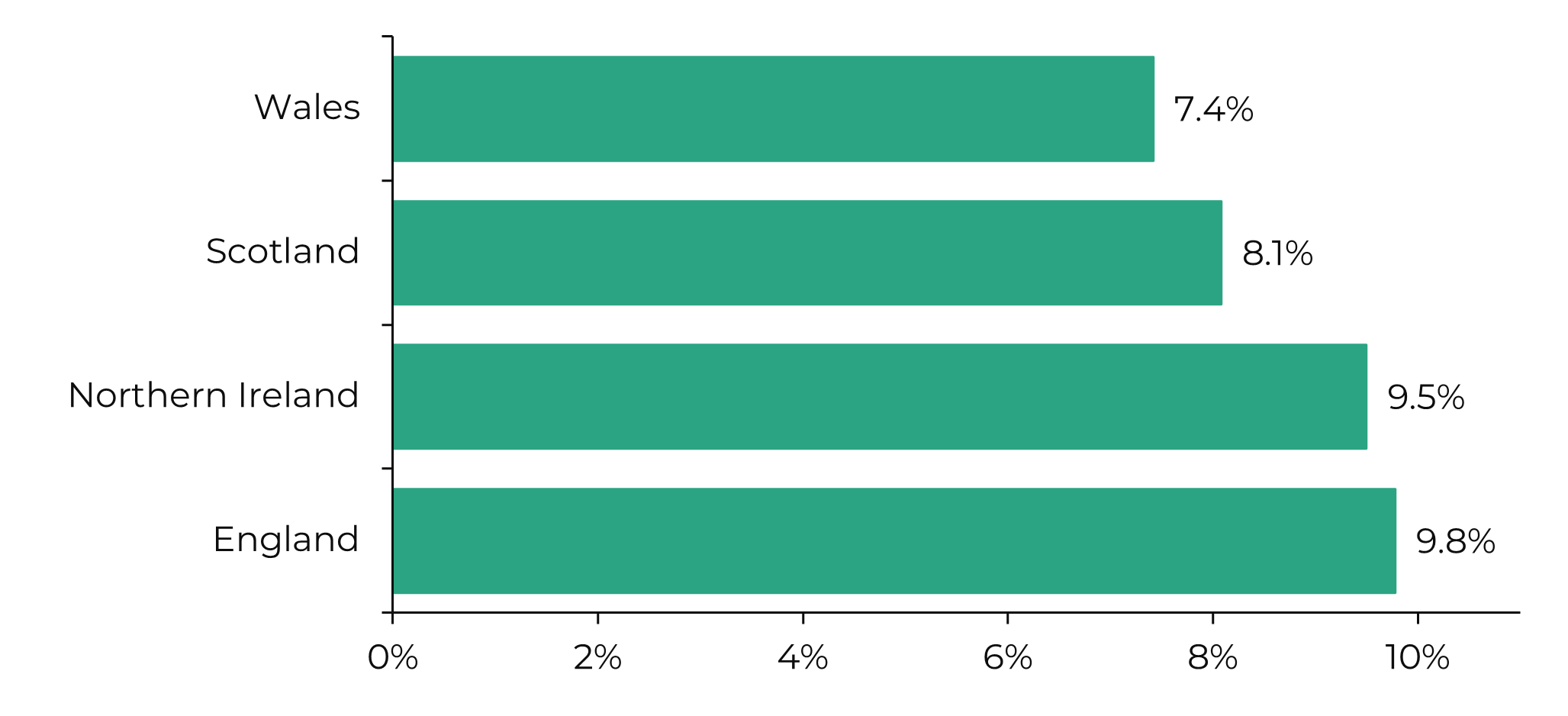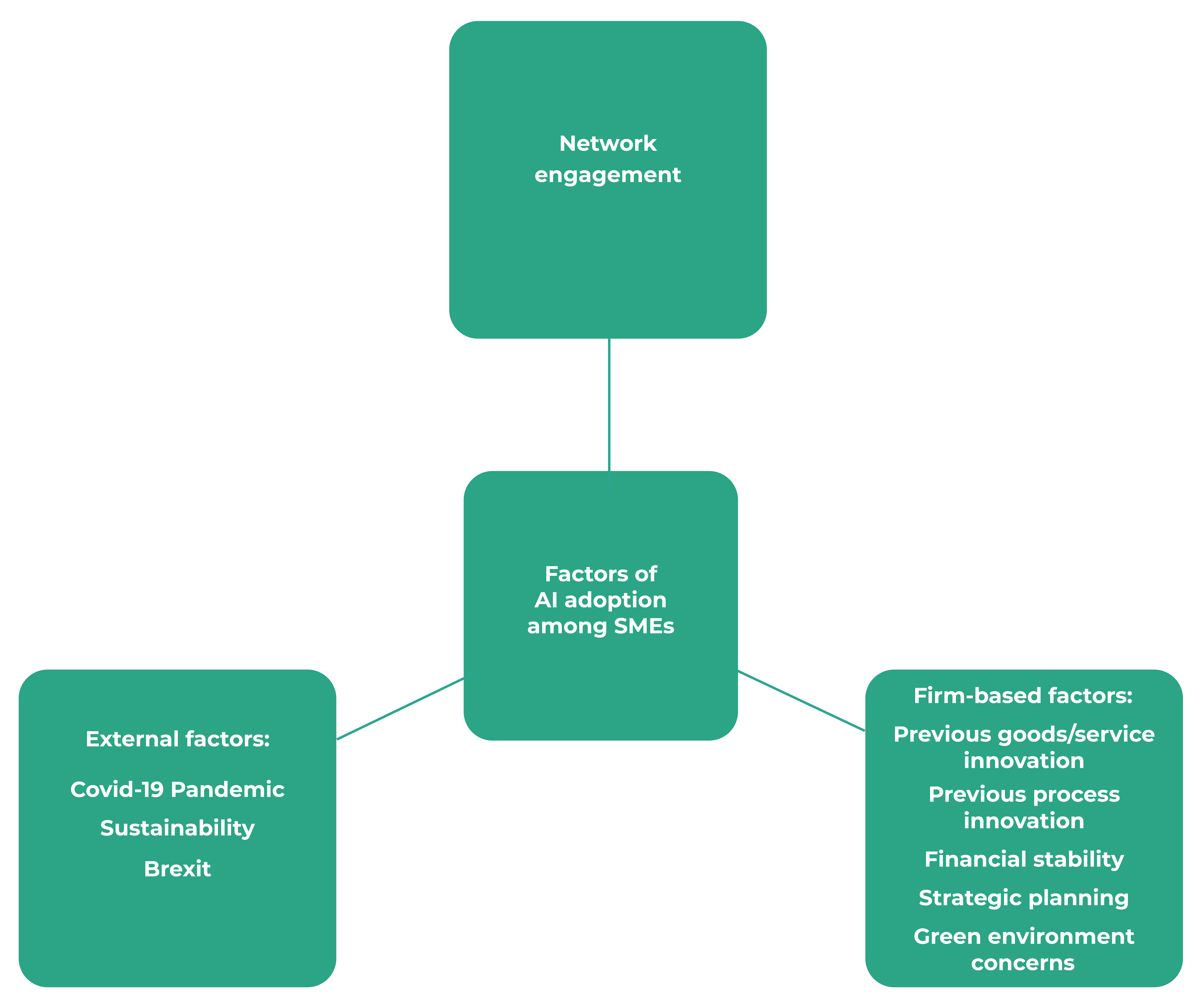This guest article has been prepared by Dr David Dowell, Senior Lecturer, St Andrews University, Dr Robert Bowen, Senior Lecturer, Cardiff University and Dr Wyn Morris, Senior Lecturer, Aberystwyth University.
The impact of Artificial Intelligence (AI) has been more rapid than any other technology across a broad range of business sectors. In 2023, Forbes Technology Council declared AI the fastest ever adopted technology by business.
This comes on the back of many years of research and developing products such as ChatGPT, which led the way.
AI is where technology and machines can mimic human tasks. In the UK, the AI market is estimated to be worth £16.8 billion. Globally, investment levels in AI differ greatly, not least influenced by an acceptance that it will invariably impact upon jobs.
AI has been acknowledged by the UK Government in its UK AI Opportunities Action Plan as an important aspect in growing the UK economy, supporting public services and improving people’s lives. Opportunities have been identified in Wales, such as the creation of a data centre campus in Bridgend.
In this article we explore the uptake of AI by SMEs and set out the finding of our research into adoption of AI in rural SMEs in Wales. We conclude by highlighting considerations for policymakers.
Uptake of AI by SMEs
Small and medium enterprise (SME) AI adoption rates are far lower than those in larger organisations.
The 2023 UK Innovation Study shows 9% of SMEs are using AI for production processes, as opposed to larger organisations where the figure is 23.3%. For ‘broader innovators’ (SMEs that innovate), the discrepancy grows, with SMEs 12.5%, and larger organisations 28.8%.
For ‘non-broader SMEs’ (those that don’t innovate), adoption of AI is 4%, and in larger organisations it’s 13.9%. Across the board, SMEs aren’t taking up AI at the same levels as larger organisations.
Broadly, we see lower levels of AI adoption in Wales. 2022 data highlights 7.42% of SMEs have adopted AI in some form, lower than England (9.78%), Scotland (8.08%) and Northen Ireland (9.50%). The percentage of AI uptake is relatively stable, with around the same percentage in the year 2021.
Figure 1: AI adoption on SMEs by UK country, 2022.

Source: UK innovation survey 2023
AI adoption can lead to better business performance and add around 3.4% annually to productivity growth. SMEs can benefit from the technology, with functions such as marketing, transportation and data analysis improved through adopting AI.
This is important to rural SMEs which face challenges of attracting people to work, moving products to market, and innovation.
But there are challenges which need to be understood and addressed including taking account of the Welsh language. in addition to technological concerns.
Currently, the compatibility of AI with the Welsh language requires more development. Technological concerns include access to the internet, including mobile coverage, as well as in-house issues such as computer skills, cyber risks and cost implications.
Types of AI and benefits for rural SMEs
There’s great potential for AI to enhance productivity in Welsh rural SMEs, creating spillover effects for local economies.
AI doesn’t have to be all encompassing, rather it can enhance low level processes through incremental process innovation. Furthermore, AI can build capacity for innovation, with the ability to create value through ease of integration, and better information processing.
To that end, AI can be integrated into SME processes to enhance value creation and performance through incremental enhancement products, services and seizing opportunities with greater efficiency.
AI adoption in rural SMEs
For the most part, adoption of AI in rural SMEs in Wales is incremental. While the change AI can bring is vast, smaller incremental use in processes, administration and technical areas, such as fertiliser application, can have immediate and dramatic benefits for SMEs and their surrounding economies.
For rural adopters of AI across the UK, production and construction had the highest uptake (45.1%), followed by business services (29.6%), transport, retail and food service/accommodation (18.31%) and other services (7.0%).
There are a number of factors which drive the adoption of AI in rural SMEs. These are broadly SME factors, external factors, as well as the technology itself driving adoption. This is combined with an SME’s willingness to engage in networks.
Policymakers can take action in each of these areas to help transition to an inclusive SME AI-enhanced Wales.
Figure 2: Factors which drive the adoption of AI in rural SMEs

Within the SME, the ability to undertake AI-related processes and activities is comparatively easy.
Staff training required is minimal for incremental use of AI using the many readily available packages. The automation of administrative tasks can be relatively straightforward so traditional barriers within SMEs can be less of a factor.
However, business planning and strategic direction influence adoption. Past experiences with innovation are also key drivers of AI adoption.
Sustainability and green based attitudes have a positive effect on AI adoption. The more sustainably inclined the SME, the more likely it is to adopt AI.
Here the paradox of energy use becomes apparent, with people using AI as a result of environmental intentions, but AI generally uses large amounts of energy to produce outputs. Ultimately the ability to act in an environmentally conscientious manner has a positive effect on AI adoption.
Networks have been identified as one way to pull rural SMEs into the adoption of AI. Rural networks face logistical and demographic challenges, but these could be effective mechanisms to enable AI adoption.
AI policy considerations
Policy to enhance uptake of AI in rural Welsh SMEs needs to consider several factors. The policy developed must target those that are less innovative, less environmentally driven and less strategically minded.
Support should aim to raise awareness of the possible positive and negative implications of AI adoption and promote use in rural SMEs.
Research suggests AI will change aspects of work but may not replace jobs. Incremental process innovation, which enhances productivity through adoption of AI, is possible and relatively easy because the AI technology is simple and accessible.
Policy needs to consider the amount of energy consumed to provide AI and the broader digital divide in Wales. Rural SMEs will need better energy and digital provision to compete with urban equivalents.
Current rural networks, such as Farming Connect, could be allocated a champion user and demonstrators to show the technology. The example of a ‘champion’ within local communities could spill over to others in the community as people become more aware of the ways in which AI could be applied within their business.
The most effective way to demonstrate and assess application is through networks. Networks in rural areas can be diverse and often biased towards certain regular attenders, so those who are harder to reach should also be targeted.
Conclusion
Findings from our research imply that rural SMEs have low levels of AI technology adoption, particularly in Wales, and increased awareness of the advantages of AI technology could support rural SMEs to adopt.
While debates exist around the extent to which AI will be adopted among society, many businesses are already using AI effectively, therefore a lack of adoption could lead to some businesses lagging behind.
AI technology can be seen from basic levels of use, such as using ChatGPT in supporting business activities, to more advanced levels of AI through automation activities.
The role of networks can support the increased use of AI by informing rural businesses of how AI could be effectively adopted within the business, and by encouraging more widespread adoption through examples of good practice by local champions.
This guest article has been prepared by Dr David Dowell, Senior Lecturer, St Andrews University, Dr Robert Bowen, Senior Lecturer, Cardiff University and Dr Wyn Morris, Senior Lecturer, Aberystwyth University.
Any views are those of Dr Dowell, Dr Bowen and Dr Morris and not those of Senedd Research.
The authors are particularly grateful to The Department for Business and Trade and the Enterprise Research Centre for providing funding for the study.
Senedd Research acknowledges the support of St Andrews University, Cardiff University and Aberystwyth University that enabled Dr Dowell, Dr Bowen and Dr Morris to produce this briefing.






